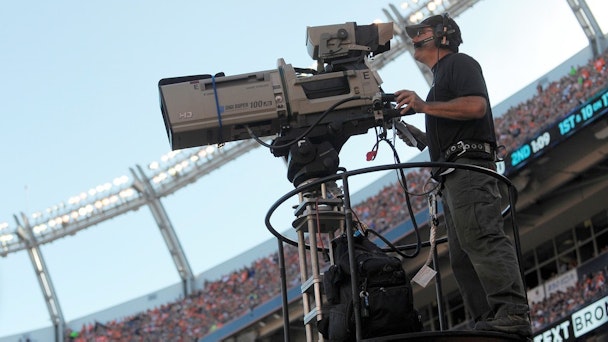PwC report: even as media companies struggle, sports rights are more in demand than ever
PriceWaterhouseCoopers (PwC), the professional services firm, has released its annual sports market outlook “At the gate and beyond.”


This year’s edition looks at the next five years and examines how media rights, gate revenue, and sponsorship, among other things, will alter the sports landscape.
While there is seemingly a new story every day about ESPN’s struggles – which are partly based on how much money they’ve committed to carrying games – there has never been more demand for rights. PwC projects that media rights will increase at a compound annual rate of 7.2 per cent, from an estimated $14.6 billion in 2014 to a projected $16.4 in 2015 and $20.6 billion in 2019.
“The media rights segment represents the fees paid by rights holders (networks) to properties to broadcast sports events,” Adam Jones, Sports Advisory Services Director at PwC, told Found Remote. “Most rights are obligated under multi-year deals between the properties and rights holders. The growth projected over the five-year outlook period is driven by the onstart of new deals negotiated over the past several years and the continued runoff of other existing deals. Any current or future shifts in the rights holder environment - positive or negative - will not be reflected in the segment's outlook until the current deal cycle begins to wind down and current deal terms expire.”
Also set to increase at a healthy rate is sponsorship deals. Brands continue to look for ways to align themselves with teams and leagues, and with digital media, uniform rights, and new forms of in-arena signage providing interesting opportunities to do so, the sponsorship category is projected to increase at a compound annual rate of 4.5 per cent, from an estimated $14.7 billion in 2014 to a projected $15.3 in 2015 and $18.3 billion in 2019.
“Sponsor deals vary in size and scope depending on a brand's strategy,” Jones said. “In general, brand sponsors are seeking a customized, integrated package of deal assets and are considering longer-term partnerships than seen during and immediately following the national economic recession.”
Below, additional highlights from the report:
- During the outlook period, media rights are projected to surpass gate revenues as the industry’s largest segment within $200M, or one percent, by 2018.
- Local TV rights in MLB, NBA and NHL will contribute to the overall sector growth with more than 35 percent of current deals set to expire over the next five years, albeit on a smaller scale than the national rights deals that are predominately driving industry-wide growth.
- Gate revenues are projected to increase at a compound annual rate of 2.6 per cent, from an estimated $17.7 billion in 2014 to a projected $18.3 in 2015 and $20.1 billion in 2019. Despite stable macro conditions in most host markets the past few years, gate volume metrics (ticket sales and game attendance) have generally leveled off as competition from the game broadcast and price pressure on certain ticket buying segments have both continued to increase.
- Dynamic Pricing: The industry continues to seek ways to redefine the season ticket holder relationship and further enhance value to ticket holders through the amenity package, and greater flexibility in the date and seat location rights afforded to members.
- Facility naming rights will continue to contribute to short term growth within the segment following a period of relative inactivity during and immediately following the national economic recession. Approximately 40 percent of major pro league teams are currently either without a deal or with existing deals set to expire in the next five years. Furthermore, nearly 10 major pro league teams are moving into new facilities within the period, a handful of which are relocating from venues without a naming rights partner.
- Licensed merchandise sales are projected to increase at a compound annual rate of 1.4 per cent from an estimated $13.5 billion in 2014 to a projected $13.7 in 2015 and $14.5 billion in 2019.
You can access the Found Remote hub here. Sign up to receive The Drum's Found Remote newsletter.

